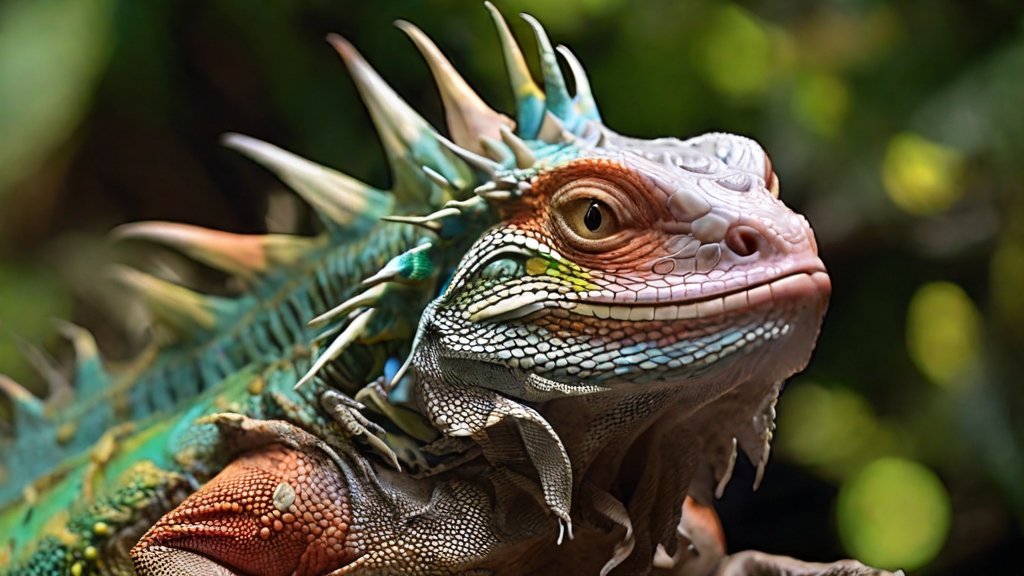Iguanas are fascinating reptiles that can be found in a variety of environments across the globe. From the tropical rainforests of South America to the deserts of North America, iguanas have adapted to thrive in a wide range of habitats.
Understanding where these reptiles live and how they survive in their natural environments is important for both conservation efforts and scientific research.
Why understanding an iguana’s habitat is important
By understanding the natural habitats of iguanas, researchers can gain insight into the adaptations that allow these reptiles to thrive in different environments. This knowledge can be used to inform conservation efforts and protect iguanas in their natural habitats.
Additionally, understanding where iguanas live can help us better appreciate these unique animals and the ecosystems they inhabit.
The Tropical Rainforest
Tropical rainforests are lush, humid environments that are home to a wide variety of plant and animal species. Iguanas are no exception and can be found in several areas of the tropical rainforest.
What iguanas can be found in this environment
In the tropical rainforest, iguanas can be found in several different species, including the green iguana, the rhinoceros iguana, and the spiny-tailed iguana.
These reptiles are well adapted to life in the rainforest, with their long, powerful tails helping them to navigate the dense vegetation.
How to spot iguanas in the rainforest
Spotting iguanas in the rainforest can be challenging due to the dense vegetation. However, keeping an eye out for open spaces such as clearings or riverbanks can increase your chances of spotting one.
Green iguanas can often be seen sunbathing on tree branches, while spiny-tailed iguanas tend to stay closer to the ground.
The Desert
Deserts are harsh, arid environments that can be challenging for many species to survive in. However, some iguanas have adapted to thrive in these extreme environments.
What iguanas can be found in this environment
In the deserts of North America, the most well-known iguana species is the desert iguana. These reptiles are well adapted to the desert’s extreme temperatures and can often be seen basking in the sun to regulate their body temperature.
How iguanas adapt to the desert’s extreme temperatures
To survive in the desert, iguanas have developed several adaptations. Their scales help to reflect sunlight and retain moisture, while their burrowing behavior helps them to escape the heat of the day.
Additionally, desert iguanas have a specialized gland in their nostrils that helps them to excrete excess salt, which is important in such a dry environment.
Coastal Zones
Coastal zones are dynamic environments that can pose unique challenges for iguanas.
What iguanas can be found in this environment
In coastal zones, iguanas are most commonly found in the marine iguana species, which is unique among iguanas in that it is adapted to life in the ocean.
Marine iguanas are found only in the Galapagos Islands and are considered a keystone species in the ecosystem.
The unique challenges of iguanas living in coastal zones
Living in coastal zones, marine iguanas face unique challenges such as strong ocean currents and a lack of food sources on land.
To survive, they have developed several adaptations such as the ability to dive deep into the ocean to feed on algae and other marine plants.
Mountainous Regions
Mountainous regions can be inhospitable environments for many species, but some iguanas have adapted to life at high altitudes.
What iguanas can be found in this environment
In mountainous regions, the most well-known iguana species is the Galapagos land iguana. These reptiles can be found on several of the Galapagos Islands and are well adapted to life in the rocky, inhospitable environment.
How iguanas survive in high altitudes
To survive in high altitudes, Galapagos land iguanas have developed several adaptations. Their strong legs help them to navigate the rocky terrain, while their diet of cactus pads and other vegetation provides them with the nutrients they need to survive.
Conclusion
Understanding where iguanas live and how they survive in their natural environments is important for both conservation efforts and scientific research.
By respecting and protecting iguanas in their natural habitats, we can help to ensure the survival of these fascinating reptiles for generations to come.




